

Culzean Castle is a magnificent Robert Adam mansion, largely built in the 18th century but incorporating an earlier castle at its core.
There is thought to have been a castle at Culzean since at least the 12th century, although exactly when it was built and what form it took is unknown. It
Occupying a prominent cliff-top position, it commands views right across the Firth of Clyde, from the mouth of the Clyde to the north, west to the Isle of Arran and the Kintyre peninsula, and south-west to Ireland.
Within the cliffs below the castle are natural caves which according to tradition were linked to the castle’s basement via a secret tunnel. If this tunnel even existed then its entrance and exit have been lost. However it may not be as fanciful an idea as it first appears. The rock between the castle and the caves below is thought to be relatively thin, which led Robert Adam to build two stone pillars to support the roof of the cave in the late 18th century.
The first written reference to a castle here seems to come in the 1400s, when it was known as Coif or Koif Castle, or the House of Cove. It was owned by the Earls of Cassillis, and held for them by various Kennedy relations over the years. The ancestors of the Kennedys had lived in the area since at least the mid-12th century, the first of the family to be mentioned in a charter being a Duncan de Carrick.

Joan Blaeu, Amsterdam, 1654
In 1569 Gilbert Kennedy, the 4th Earl of Cassillis, gave Koif Castle to his brother Thomas Kennedy. During the 1590s Sir Thomas rebuilt and enlarged the castle, creating a three storey L-plan tower. On the ground floor was a vaulted basement, a Great Hall on the first floor and other chambers or bedrooms above. Terraces were created around the tower, and the whole lot was surrounded by a strong courtyard wall.
Thomas had previously lived at the old manor house of Cullean, which was somewhere to the south-east of Turnberry although its exact site has now been lost. However there were competing claims for the ownership of both Koif Castle and the old house of Cullean. One such claim over Koif came from Alexander Kennedy of Balvaird.
In 1597 Thomas and Alexander both resigned their claims over Koif to John Kennedy, the 5th Earl of Cassillis, who was Thomas’ nephew. The 5th Earl then granted Koif Castle and its lands back to Thomas, and the same year confirmed that Thomas and his heirs also owned Cullean and its barony. The two properties were united into the “tenandry of Koif” for which Thomas paid the Earl of Cassillis an annual rent.
In 1600 Thomas Kennedy was knighted, and also became known as the Master of Cassillis or Tutor of Cassillis. While Sir Thomas lived at Koif Castle his eldest son, also Thomas, lived at Cullean. The younger Thomas seems to have died in or before 1601 as the second son, James, was named as heir in that year. Around this time the old manor house of Cullean seems to disappear from the records.
Later in the 17th century Koif Castle became known as Cullean Castle since the family were called Kennedy of Cullean, although it still appeared on some 18th century maps as Koif. It wasn’t until later in the 18th century that the spelling of Culzean was adopted.
In 1750 John Kennedy, the 8th Earl of Cassillis, carried out improvements to the castle, amongst which was the creation of an Eating Room within what was originally the ground floor of the old tower house, opening out onto the garden’s terraces.
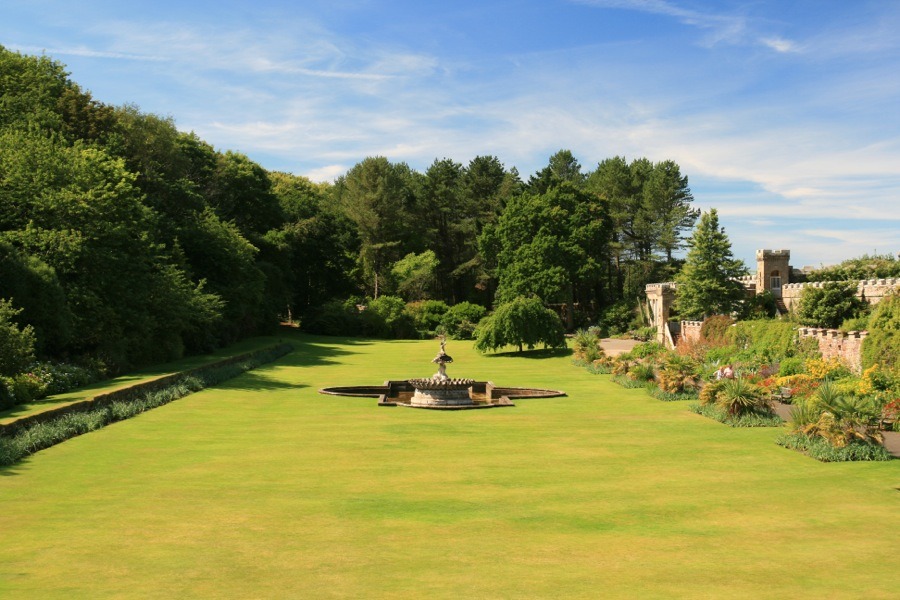
Following the death of the 8th Earl in 1759 the Kennedys made Culzean their principal seat, superseding Cassillis House. Sir Thomas Kennedy, the 9th Earl of Cassillis had travelled throughout Europe on a Grand Tour in the 1750s and had lots of ideas for his new home.
It was his heir and brother however, David Kennedy, the 10th Earl of Cassillis, who was responsible for commissioning Robert Adam to turn the medieval castle into a mansion fit for a family of such wealth and status. Unfortunately neither architect nor client would see the completion of the building, as both died in 1792 before the castle was finished.
Adam totally transformed the old castle, turning it into a grand country house befitting the Kennedys status. Little remains of the old tower, although the Picture Room was created within the space of the original Great Hall. The castle was extended to the south and adorned with tall round towers.


New wings added to the east and west, and a large drum tower added on the north side on the top floor of which is a saloon with panoramic views across the Firth of Clyde.
The improvements weren’t confined to the castle itself, as additions were made across the estate. A brewhouse was built beyond the west wing, while to the east were built a Stable Court and a Home Farm.

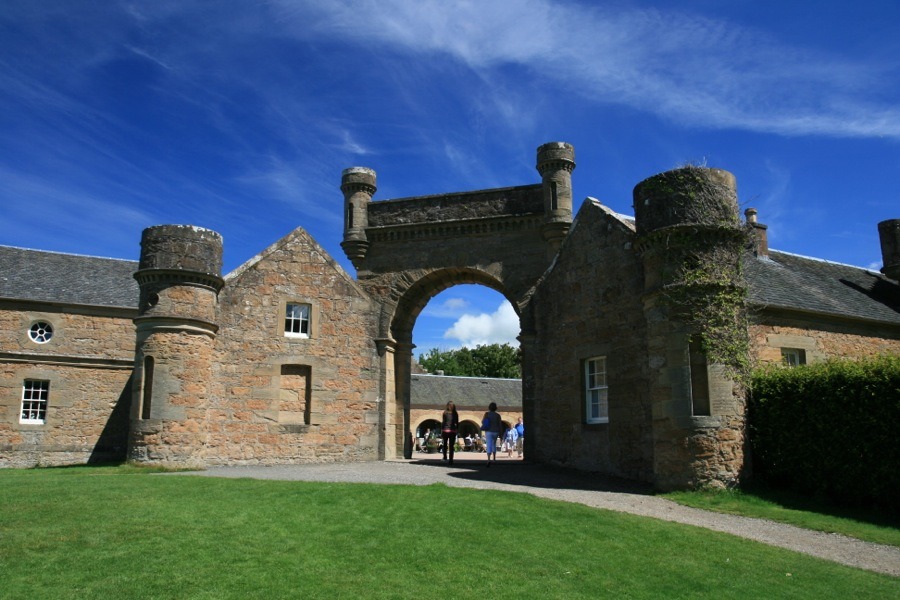
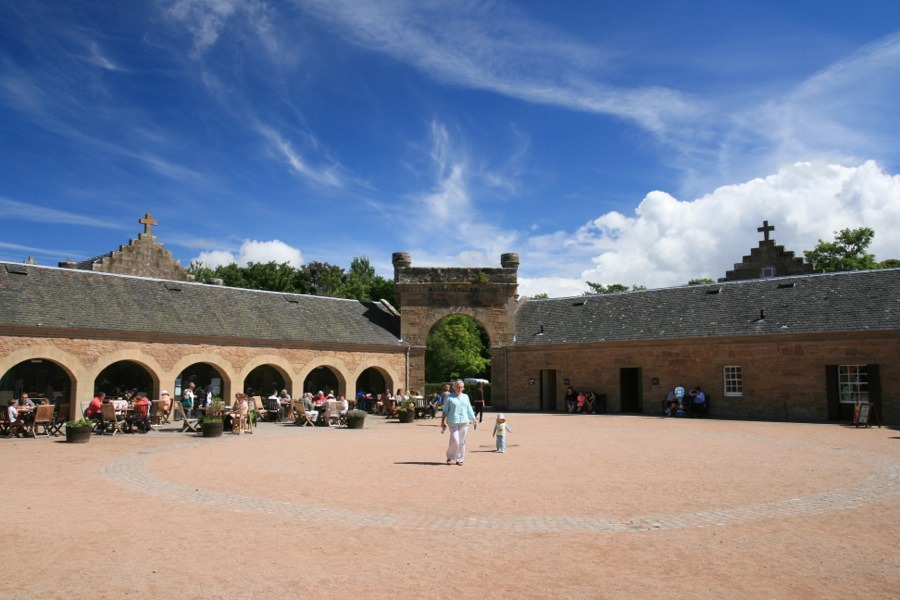
A gateway was built to the south-east of the castle, designed to look like a ruined archway, behind which a long causeway snakes towards the castle.

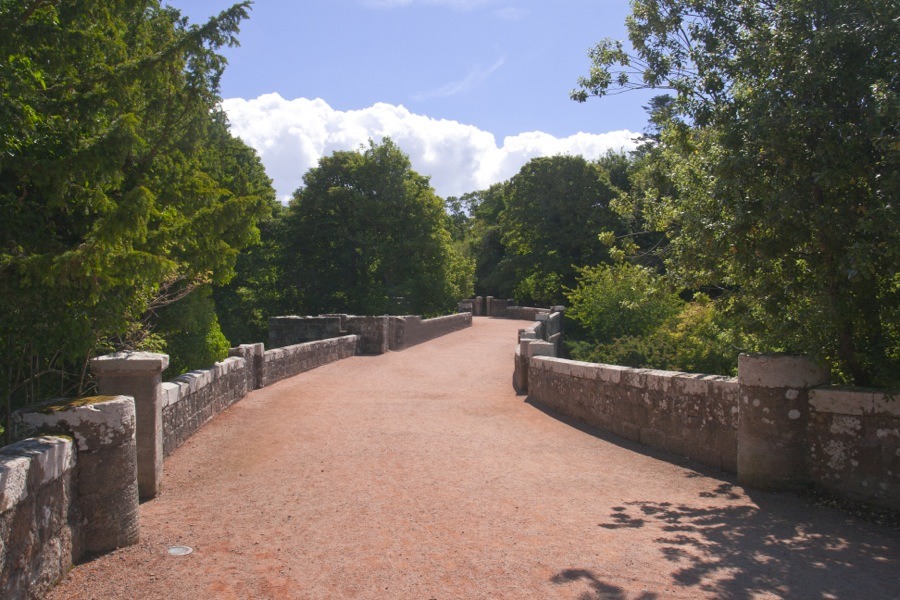
Closer to the castle, at the other end of the causeway, was a second archway, topped off with a sculptural version of the Kennedy family crest.
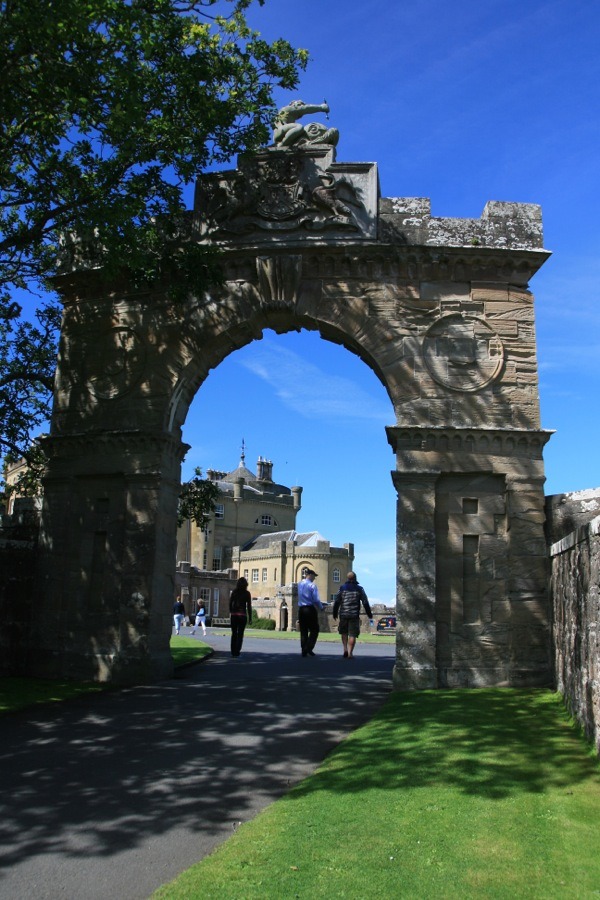
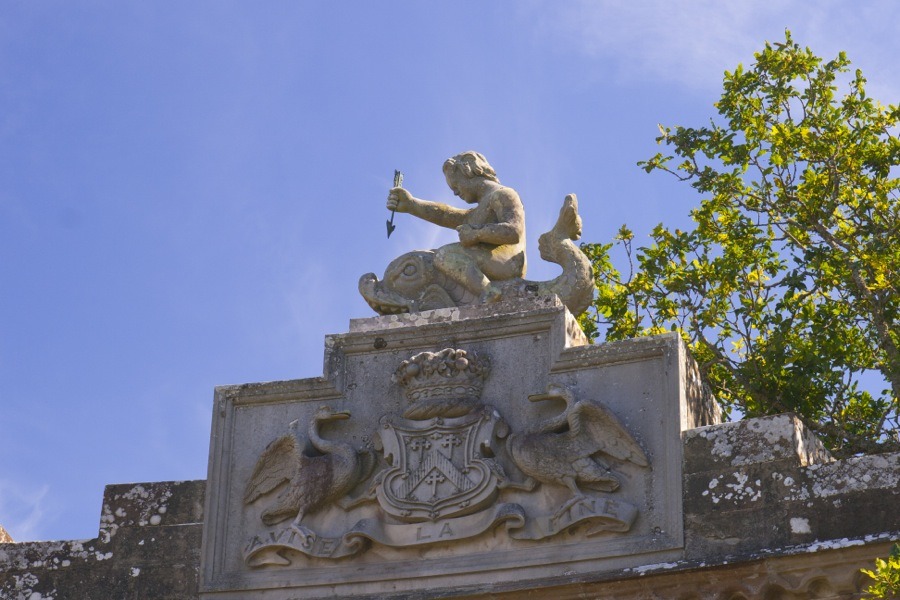
The 10th Earl never married and didn’t have any children, and upon his death in 1792 the title and estates passed to his American cousin, Captain Archibald Kennedy. Archibald’s father, also Archibald, had emigrated to New York in 1710 and became Receiver General of Customs for the city. The younger Archibald had returned to Britain in 1781 with his new family and got to know the 10th Earl.
Archibald, the 11th Earl, only lived for two years more than his cousin, dying in 1794. He was succeeded by his son, also Archibald, who continued to improve and then complete the castle. In 1806 Archibald was given the title Baron Ailsa, the title coming from the family’s ownership of the Ailsa Craig, and in 1831 he was created the 1st Marquess of Ailsa.
Another Archibald Kennedy, the 3rd Marquess, commissioned Wardrop & Reid to make further additions to the castle in 1877, and they built a new entrance on the east side.

They also added a new three storey west wing on the site of Adam’s brewhouse.

The Kennedys continued to live at Culzean until 1945, when, in order to avoid inheritance tax, Charles Kennedy, the 5th Marquess, gave the castle and the surrounding policies to the National Trust for Scotland. This was the first large country house bought by the Trust. Culzean’s 600 acres of formal gardens and woodland were later designated Scotland’s first country park in 1969, with the name Culzean Country Park.
The family retained 10,000 acres of land from the old estate, selling off around 100,000 acres of moorland, mainly to the Forestry Commission, and moved out, returning to Cassillis House.
As part of the deal with the National Trust for Scotland the Kennedys stipulated that the top floor was to be converted into an apartment for the use of General Dwight D. Eisenhower, who first visited in October 1946. Eisenhower visited and stayed at the apartment on three subsequent occasions, including once while serving as President.
The Eisenhower apartment is now run as a small hotel, and rooms can be rented on an individual basis, or the entire apartment can be rented.
In the 1970s the National Trust for Scotland restored the Home Farm, which now houses activities and a café, while a converted estate house is now home to a secondhand bookshop. The castle itself underwent years of restoration – paid for through the bequest of an American millionaire, William Lindsay, who had never visited Scotland – and reopened in 2011.
Alternative names for Culzean Castle
Coif Castle; Cullean Castle; House of Cove; Koif Castle













